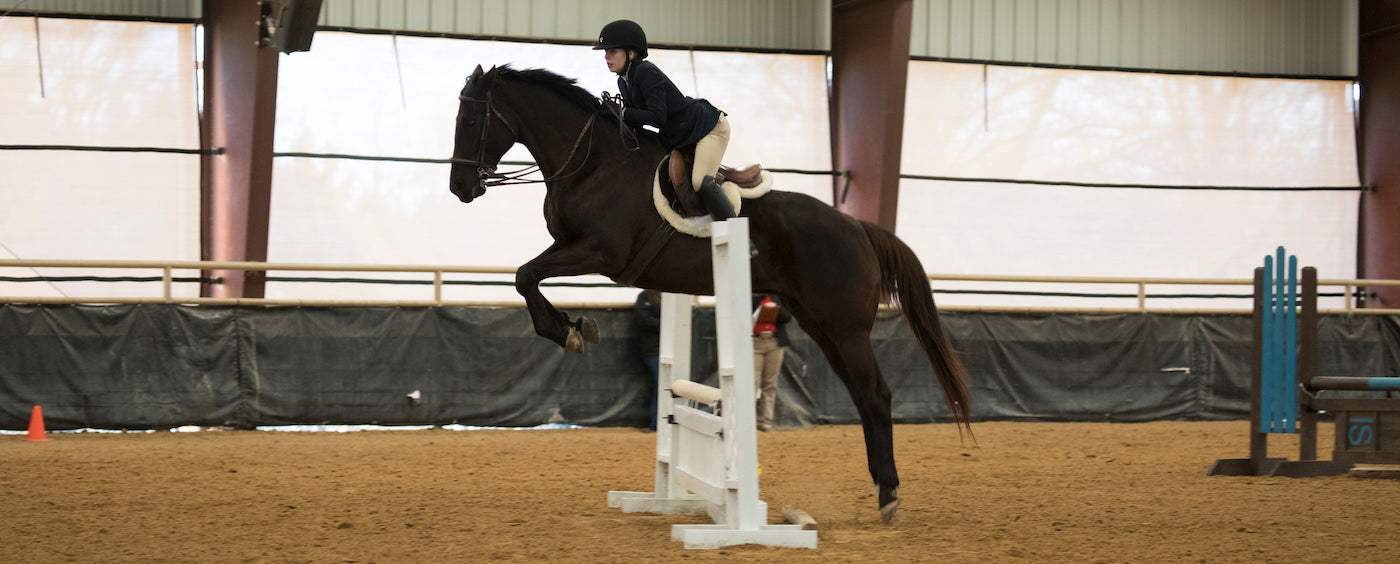
English Coming into the Western World
The Western horse world and the English horse world refer to two distinct styles of horseback riding and horse care. While both share a love of horses, the differences between them are significant, including the riding style, tack, attire, and overall approach to training and competition. English riding originated in Europe and is associated with traditional horseback riding, including dressage, show jumping, and eventing. English riders use a narrower, lighter saddle and reins held in both hands, and their riding style is more upright and forward-moving. English riders tend to focus on precision and agility in jumping, hacking and other athletic events.
English Disciplines
There are many disciplines within the English horse world, each with their own unique rules and techniques.
Dressage : A discipline focused on training horses to perform precise movements through a series of tests. Riders and horses are judged on their precision, accuracy, and fluidity of movement.
Show Jumping : A discipline in which horse and rider navigate a course of jumps, with penalties for knocking down jumps or taking too much time. The horse and rider with the fastest time and fewest faults win.
Eventing : A combination of dressage, cross-country jumping, and stadium jumping. Horses and riders must demonstrate skill and endurance in all three areas to succeed.
Hunter/Jumper : A discipline that combines the precision and technicality of dressage with the jumping of show jumping. The hunter portion is judged on the horse's form, movement, and style over a course of jumps, while the jumper portion is judged on speed and accuracy in jumping.
Equitation : A discipline that focuses on the rider's form, position, and effectiveness in guiding the horse. Riders are judged on their position, control, and effectiveness in riding.
Polo : A team sport in which riders use mallets to hit a ball into the opposing team's goal. Horses are trained to be agile and responsive to the rider's cues.
Fox Hunting : A traditional sport in which riders on horseback follow a pack of hounds as they hunt a fox. The goal is to follow the hounds and participate in the chase, rather than to catch or kill the fox.

English Tack
-
Saddle - The type of saddle you need will depend on the discipline you plan to pursue, such as dressage or jumping. A dressage saddle has a deeper seat and longer flaps, while a jumping saddle has a more forward flap and less padding.
-
Bridle - An English bridle typically includes a headstall, bit, and reins. The type of bit you choose will depend on your horse's training and sensitivity.
-
Girth - A girth is used to secure the saddle to the horse's belly. There are several types of girths available, such as a standard leather girth or a neoprene girth.
-
Stirrup Irons and Leathers - Stirrup irons are the metal loops where you place your feet, while stirrup leathers attach to the saddle and secure the stirrup irons in place.
-
Saddle Pad - A saddle pad helps to protect the horse's back from the saddle and can provide additional cushioning.
-
Martingale - A martingale is a piece of equipment used to control the horse's head carriage. There are different types of martingales, such as a standing martingale or a running martingale.
-
Breastplate - A breastplate is a strap that goes around the horse's chest and attaches to the saddle. It helps to keep the saddle in place and prevents it from sliding back.
It's important to consult with a knowledgeable professional before purchasing any tack to ensure that it is appropriate for your horse and the discipline you plan on pursuing.




English Competing Attire
The attire you should wear when competing in an English horse show will depend on the specific discipline and level of competition. However, here are some general guidelines :
-
Horse Helmet - A properly fitted ASTM/SEI certified helmet is required at all times when mounted on a horse at a show.
-
Show Jacket - In most English riding disciplines, a dark colored, conservative show jacket is appropriate. Depending on the level of competition, a black or navy jacket is most common, but there are different color options for less formal competitions.
-
Riding Breeches or Jodhpurs - Tan or beige breeches are typically worn in most English riding disciplines. Jodhpurs, which are ankle-length pants that are worn with paddock boots, are also commonly worn in certain disciplines.
-
Riding Boots - Tall, black, leather riding boots are the most common and traditional type of boots worn in English riding. Paddock boots and jodhpur boots are also acceptable with half-chaps or gaiters.
-
Show Shirt - A light-colored, long-sleeved show shirt is traditional in English riding. White is the most common color, but some disciplines allow for pastel-colored shirts as well.
-
Riding Gloves - Gloves are often worn to improve grip on the reins and add a polished look to your outfit.
-
Hairnet - A hairnet is worn to neatly tuck hair away and prevent stray hairs from sticking out while riding.
It's always best to consult the specific competition's dress code and guidelines to ensure that you are following the appropriate attire requirements.



NRS in the English World
NRS is proud to announce that National Ropers Supply now carries English tack! Anything from Pessoa bridles to Centaur bits to Lami-Cell saddle pads! As the saying goes “Two Worlds, One Family” - even though the Western horse world and the English horse world each have their own unique traditions, equipment and approach to horsemanship, there is some overlap between the two. There are those with a passion in the horse industry with dedicated followers and competitors with an understanding for one another. Find All Things Western and All Things English at nrsworld.com.

